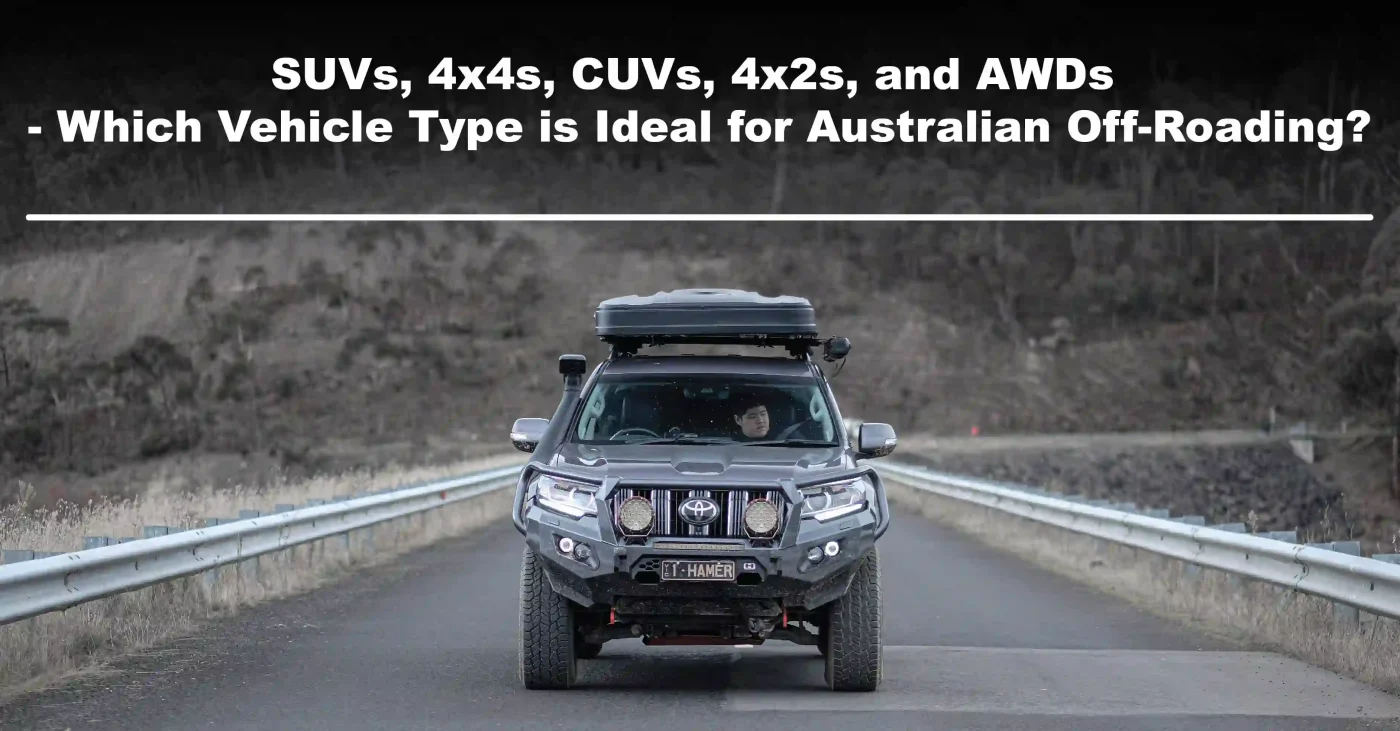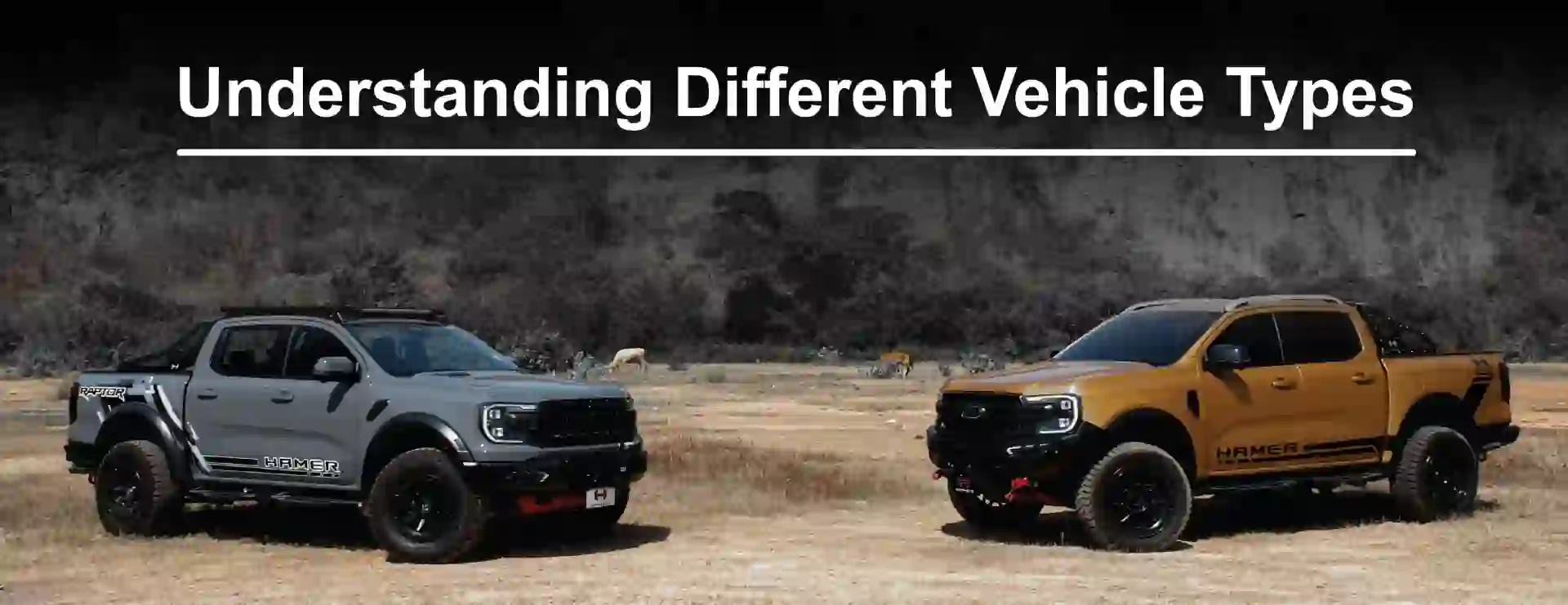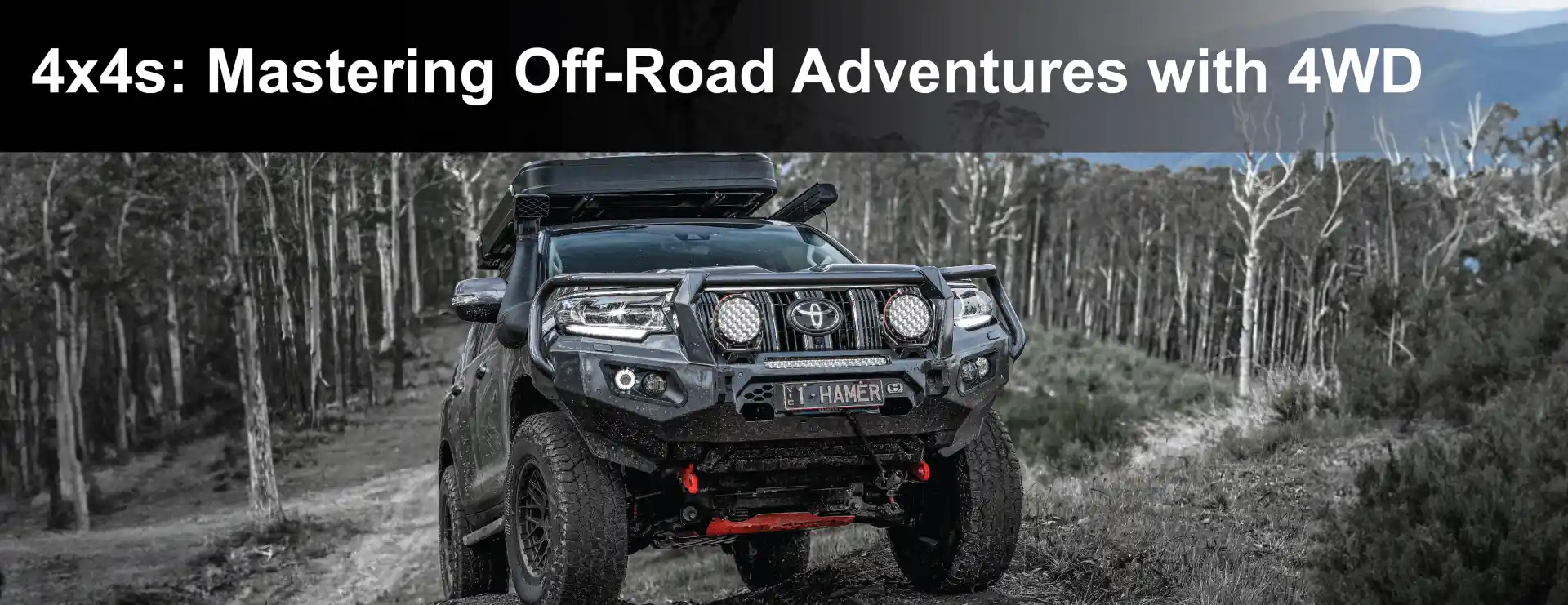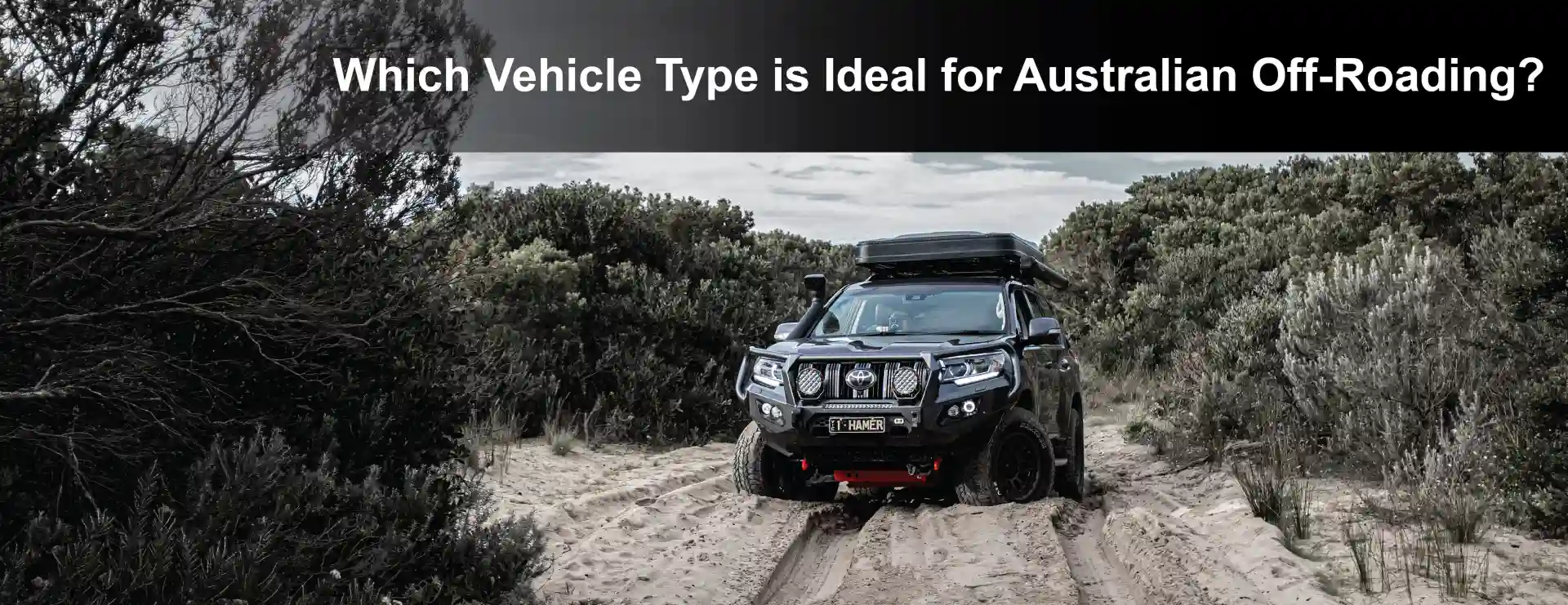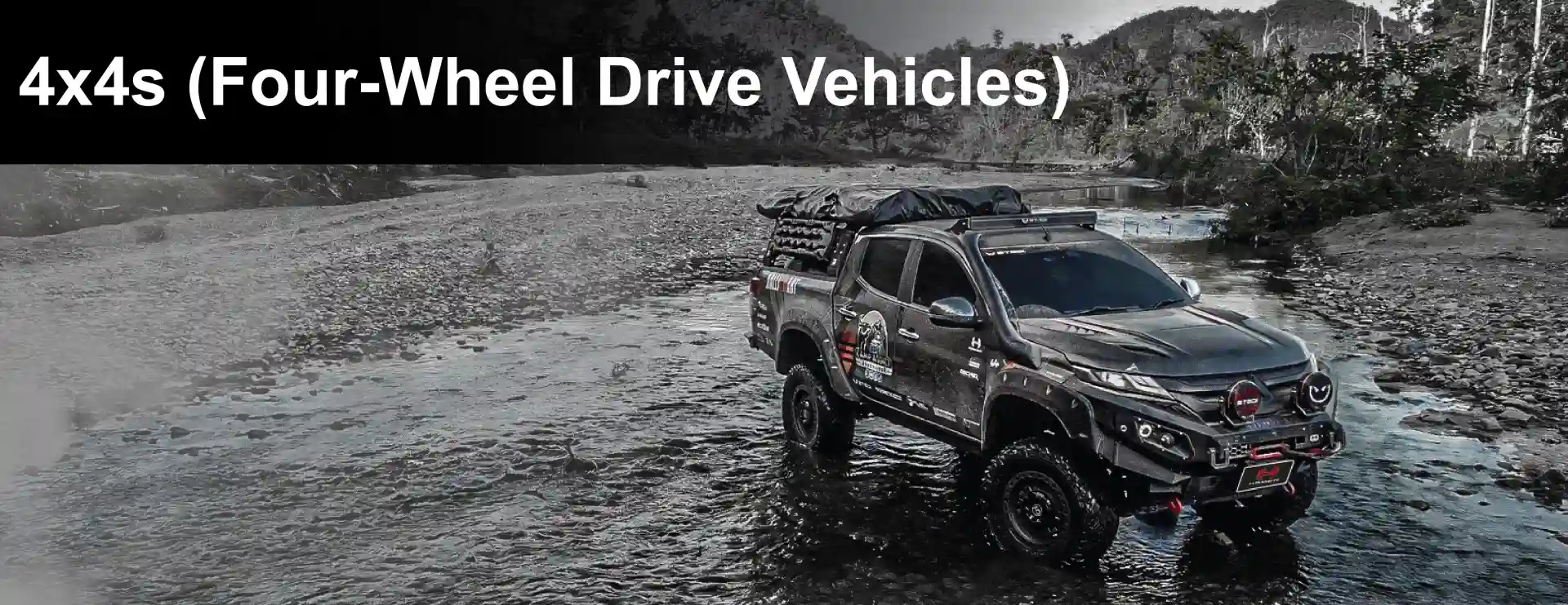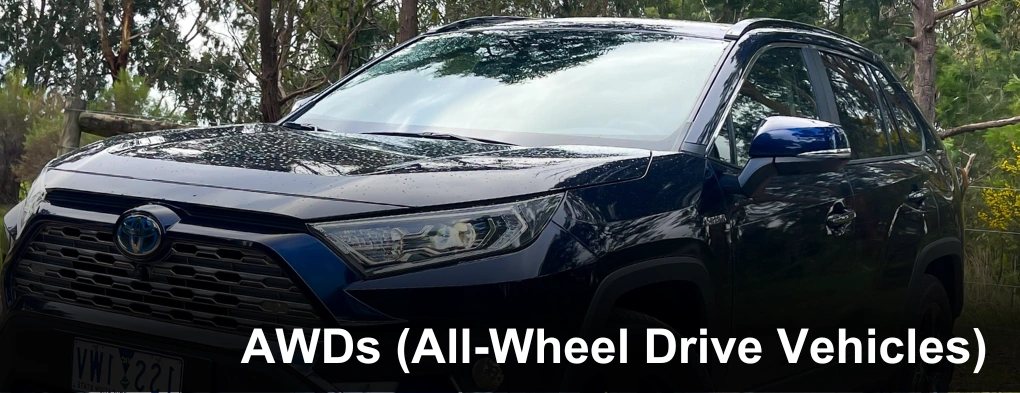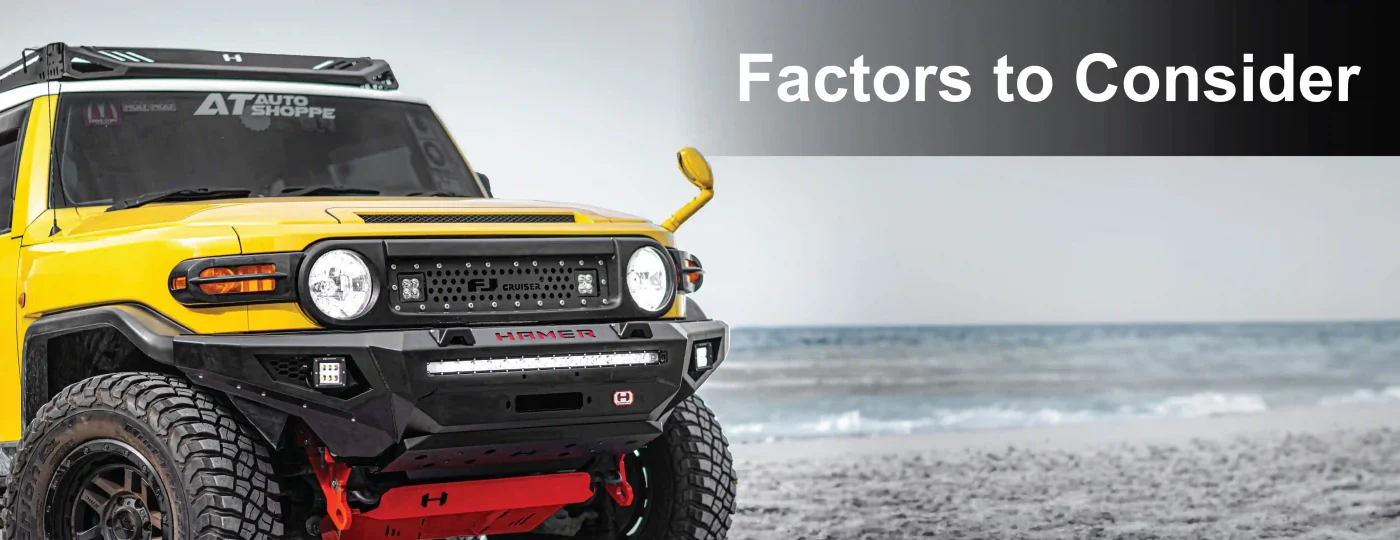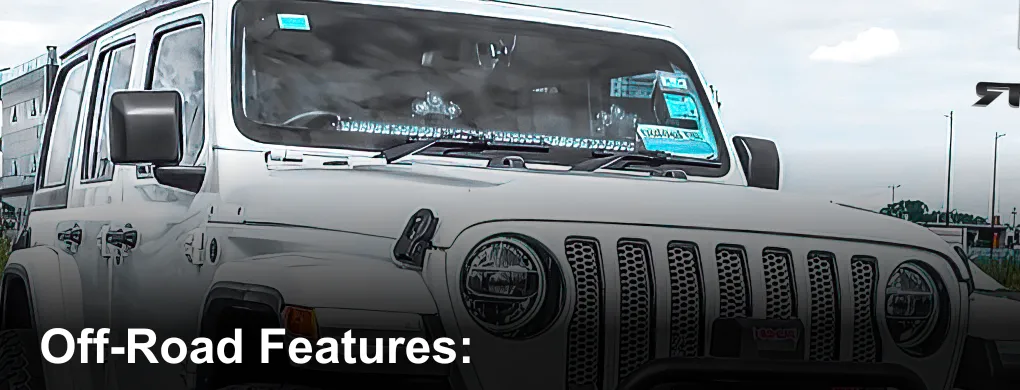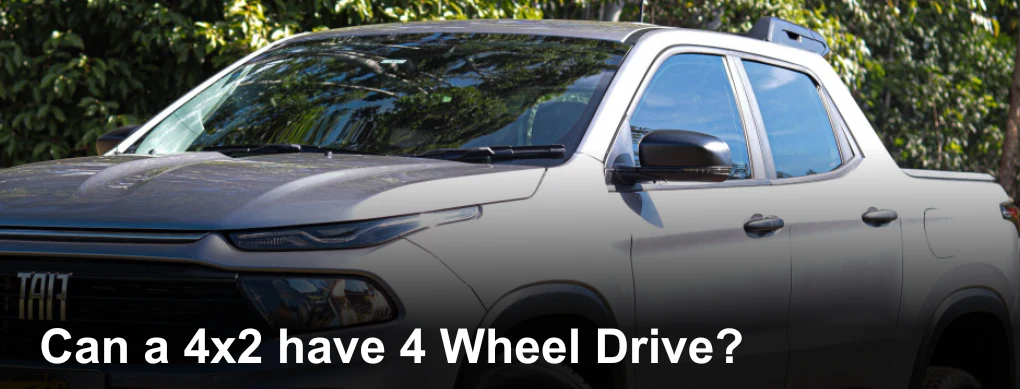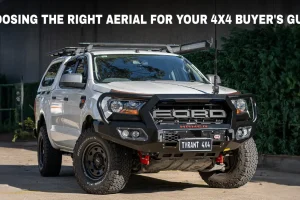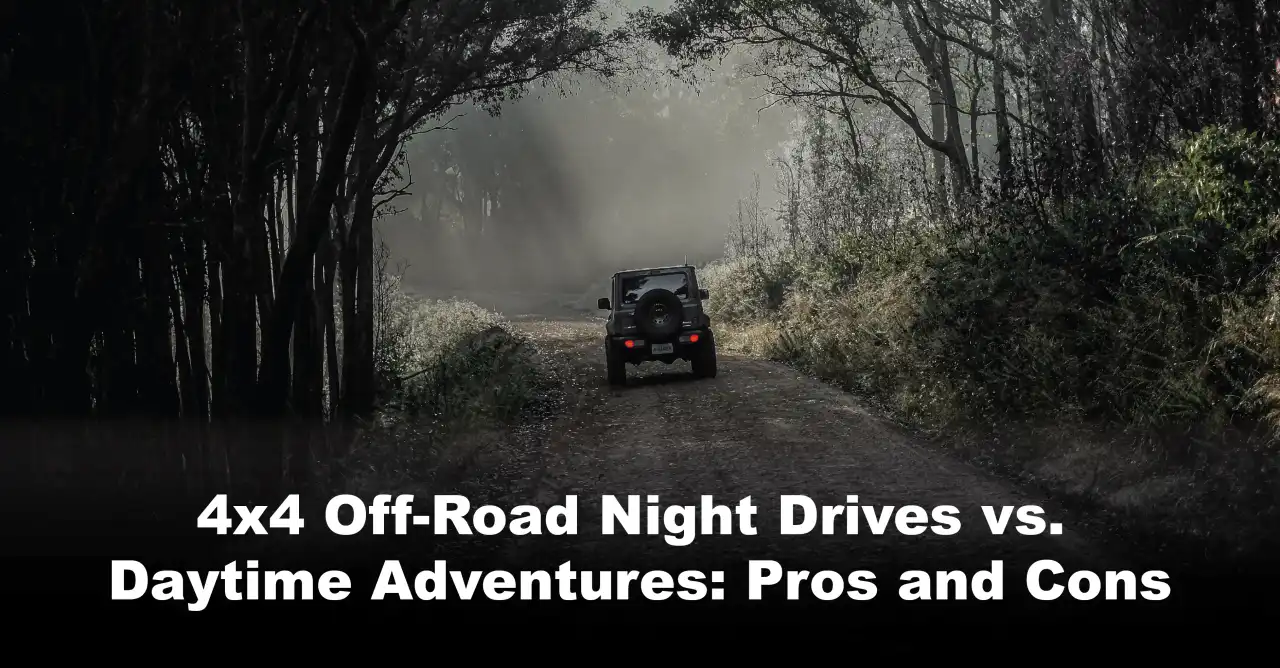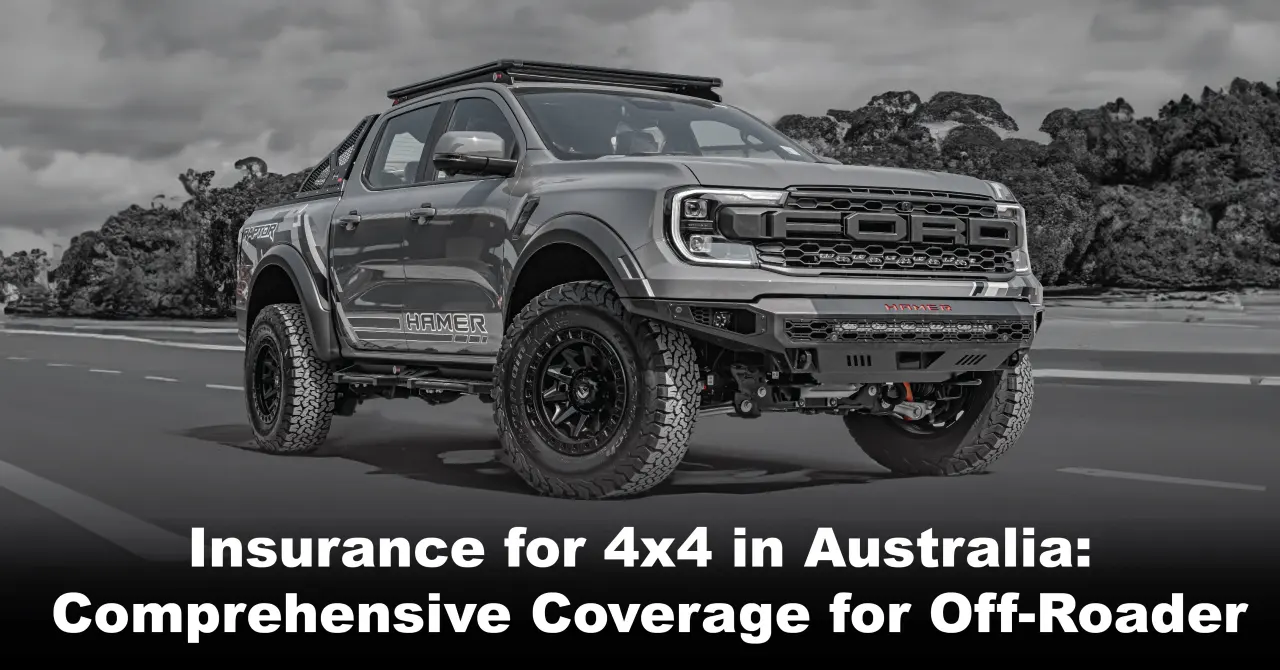NEWS & ACTIVITY
SUVs, 4x4s, CUVs, 4x2s, or AWDs, Ideal Australian Off-Roading?
When it comes to off-roading in the rugged terrains of Australia, choosing the right vehicle is crucial. SUVs, 4x4s, CUVs, 4x2s, and AWDs are popular options, each offering unique capabilities. In this ultimate comparison, we will delve into the details and analyze which vehicle type reigns supreme for Australian off-roading adventures.
From the entire SUV range to compact SUV and small SUV, 4×4, CUV, and AWD we will explore the differences and benefits of various models and help you to find the best option for your adventure trips in Australia. So fasten your seatbelts as we embark on an exciting journey through the world of off-road vehicles!
Understanding Different Vehicle Types
To make an informed decision about which vehicle type is ideal for Australian off-roading, it’s essential to understand the characteristics and distinctions of SUVs, 4x4s, CUVs, 4x2s, and AWDs. Let’s dive deeper into each category:
SUV (Sport Utility Vehicles):
- SUVs are versatile vehicles designed to handle a variety of terrains, making them popular choices for off-roading enthusiasts.
- These vehicles offer ample cargo space and seating capacity, making them suitable for family trips, camping adventures, caravan, and carrying equipment.
- SUVs equipped with a four-wheel drive (4×4) system are particularly well-suited for off-roading. The 4×4 system provides enhanced traction by distributing power to all four wheels simultaneously.
- Specialized off-road features like robust suspension systems, higher ground clearance, and dedicated off-road driving modes enhance the off-road capabilities of SUVs.
4x4s (Four-Wheel Drive):
- 4×4 vehicles are designed to conquer extreme off-road conditions and provide excellent traction and control.
- These vehicles have a drivetrain that powers all four wheels simultaneously, allowing them to easily tackle challenging terrains.
- 4x4s often feature reinforced rear axles, differential lockers, and specialized off-road suspension systems to handle the toughest obstacles.
- They offer impressive ground clearance, approach angles, and departure angles, enabling them to navigate steep slopes and rugged terrain without compromising performance.
CUVs (Compact Utility Vehicles):
- CUVs are smaller in size compared to traditional SUVs but offer similar functionalities.
- They blend the advantages of SUVs, such as versatility and cargo space, with the maneuverability of smaller cars.
- CUVs are well-suited for those who require a balance between everyday city driving and occasional off-road excursions.
- While they may not possess the same level of off-road capabilities as SUVs or 4x4s, CUVs can easily handle gravel roads, light trails, and moderate off-road conditions.
4x2s (Two-Wheel Drive):
- 4×2 vehicles transmit power to only two wheels, typically the front or rear wheels, depending on the drivetrain configuration.
- These vehicles are well-suited for urban driving and mild off-road conditions.
- While they may not provide the same traction and off-road capabilities as 4×4 vehicles, they offer good fuel efficiency and maneuverability for daily commuting.
AWDs (All-Wheel Drive):
- AWD vehicles constantly monitor road conditions and distribute power to the wheels with the most traction.
- This system enhances handling and stability on various surfaces, making AWDs suitable for different driving conditions, including mild off-roading.
- While they may not have dedicated off-road features like SUVs or 4x4s, AWDs provide better traction on slippery or uneven surfaces.
Understanding the distinctions and capabilities of each vehicle type will help you make an informed decision based on your off-roading needs, preferences, and the level of off-road challenges you plan to tackle.
4x4s: Mastering Off-Road Adventures with 4WD
When it comes to tackling the rugged and challenging terrains of Australia, 4×4 vehicles stand out as the unrivaled choice for off-road enthusiasts. With their robust construction, advanced drivetrain technology, and exceptional off-road capabilities, 4x4s are built to dominate any adventure, no matter how demanding.
4×4 drivetrain: Unleashing Power to All Four Wheels
Four-wheel drive systems, four-wheel drive, or 4-x4s transmit energy and torque across all four wheels. The 4-wheel drive model is heavier than its predecessors. This misconception has spread widely, and it means all four-wheel drives are synchronized with each other.
In fact, this scenario has become far simpler. Generally speaking, vehicles with four-wheel drive turn faster than their inner tyre. Within the realm of 4×4 drivetrains, different variations offer unique capabilities:
Part-Time 4WD:
This system allows drivers to manually engage 4WD mode when needed, such as in extreme off-road situations. By locking the front and rear driveshafts together, part-time 4WD provides increased traction and torque to overcome challenging obstacles.
It is important to note that part-time 4WD is typically disengaged when driving on regular roads to optimize fuel efficiency and minimize wear and tear on the drivetrain components.
Full-Time 4WD:
Unlike part-time 4WD, full-time 4WD is always engaged, making it ideal for both off-road adventures and regular on-road driving. This drivetrain configuration utilizes a center differential or a transfer case with a center differential to distribute power continuously between the front and rear axles. This allows for maximum grip and stability, providing confident handling on various terrains. Full-time 4WD systems often include features like limited-slip or locking differentials to enhance off-road performance further.
Automatic Four Wheel Drive (A4WD):
As transmission technology advances, automakers have introduced automatic 4WD systems that employ sensors and electronic controls to monitor driving conditions and automatically adjust power distribution as needed. Polaris Ranger electric vehicles usually use an automatic system.
This intelligent drivetrain configuration provides convenience and peace of mind, allowing the vehicle to seamlessly transition between 2WD (two-wheel drive) and 4WD modes based on traction requirements. A4WD systems excel in providing optimal grip on slippery or uneven surfaces, making them well-suited for both mild off-roading and everyday driving.
Which Vehicle Type is Ideal for Australian Off-Roading?
When it comes to off-roading in Australia’s diverse and challenging terrains, selecting the right vehicle type is crucial. Different vehicle types offer varying capabilities, features, and performance characteristics that can significantly impact your off-road adventures.
Let’s explore the ideal vehicle types for Australian off-roading and the factors to consider when making your decision.
SUVs (Sport Utility Vehicles)
SUVs are a popular choice for Australian off-roading enthusiasts, and for good reason. With their rugged construction, powerful engines, and versatile capabilities, SUVs excel in tackling a wide range of terrains. They are designed to handle off-road challenges while providing a comfortable and spacious interior for passengers and cargo.
4×4 Systems:
SUVs equipped with a four-wheel drive (4×4) system are particularly well-suited for Australian off-roading. The 4×4 system provides enhanced traction, allowing power to be distributed to all four wheels simultaneously. This feature is beneficial when navigating muddy tracks, sandy dunes, or steep inclines.
Off-Road Features:
Additionally, SUVs often come with specialized off-road features such as robust suspension systems, higher ground clearance, and dedicated off-road driving modes, further enhancing their off-road capabilities.
Family-Friendly:
For those who frequently embark on family trips, camping adventures, or long-distance off-road expeditions, SUVs offer ample space to accommodate both passengers and gear. Whether you’re traversing through the rugged Australian Outback or exploring remote national parks, SUVs provide the versatility, comfort, and reliability needed for a memorable off-roading experience.
4x4s (Four-Wheel Drive Vehicles)
When it comes to serious off-roading in Australia, 4×4 vehicles are hard to beat. Built with ruggedness and durability in mind, 4x4s are specifically designed to conquer challenging terrains and harsh conditions. With power delivered to all four wheels simultaneously, 4x4s provide exceptional traction, stability, and control.
Extreme Off-Roading:
Off-road enthusiasts who frequently venture into remote areas and encounter deep mud, rocky trails, or water crossings will appreciate the capabilities of a 4×4. These vehicles often feature reinforced rear axles, differential lockers, and specialized off-road suspension systems to tackle the toughest obstacles.
Impressive Performance:
Additionally, 4x4s offer impressive ground clearance, approach angles, and departure angles, ensuring they can overcome steep slopes and rugged terrain without sacrificing performance.
Whether you’re exploring the untamed landscapes of the Australian Outback or seeking thrilling off-road challenges, a 4×4 vehicle will provide the necessary capabilities and confidence to tackle even the most demanding off-road trails.
CUVs (Crossover Utility Vehicles)
CUVs, also known as Crossover Utility Vehicles, offer a more refined and comfortable driving experience compared to their truck-based counterparts. These vehicles are built on car platforms, combining elements of both sedans and SUVs.
While they may not possess the same level of off-road capabilities as SUVs or 4x4s, CUVs can easily handle gravel roads, light trails, and moderate off-road conditions.
Refined Driving Experience:
CUVs prioritize passenger comfort and on-road performance. They offer smooth handling, precise steering, and a comfortable ride, making them well-suited for everyday city driving.
Moderate Off-Road Capabilities:
While not designed for extreme off-roading, CUVs can handle mild off-road conditions. They typically have a higher ground clearance than sedans, allowing them to navigate uneven terrain confidently.
Fuel Efficiency and Maneuverability:
CUVs are known for their lower fuel consumption and efficiency, making them an economical choice for daily commuting. They are also more maneuverable than larger SUVs, making them easier to park and navigate through urban areas.
AWDs (All-Wheel Drive Vehicles)
AWDs, or All-Wheel Drive Vehicles, are designed to automatically provide power and traction to all four wheels. This feature enhances stability and control in various driving conditions, including mild off-road adventures.
While AWDs may not have dedicated off-road features like SUVs or 4x4s, they offer better traction on slippery or uneven surfaces.
Enhanced Traction:
AWD systems monitor road conditions and distribute power to the wheels with the most traction, improving stability and handling. This feature is particularly useful in wet or snowy conditions.
Versatility in Different Terrains:
AWDs perform well on various terrains, including light off-road conditions. They provide better grip and stability compared to front-wheel drive or rear-wheel drive vehicles.
Safety Benefits:
AWDs offer improved traction and stability, enhancing safety while driving on challenging roads or in inclement weather conditions.
Factors to Consider
When determining the ideal vehicle type for Australian off-roading, several factors must be considered. By evaluating these factors, you can make a well-informed decision that suits your off-roading needs and preferences.
Terrain:
Assess the types of terrains you’re likely to encounter during your off-road adventures. Consider whether you’ll be tackling rugged and challenging terrains such as rocky trails, steep inclines, or deep mud.
If so, vehicles with robust off-road capabilities, like SUVs or 4x4s are recommended. For milder off-road conditions like gravel roads or light trails, CUVs or AWDs may be sufficient.
Intended Use:
Determine the primary purpose of your vehicle. If you require ample cargo space, seating capacity, and enhanced off-road capabilities, SUVs or 4x4s are suitable choices. These vehicles offer spacious interiors and are ideal for family trips, camping excursions, or carrying equipment.
On the other hand, if both fuel economy, efficiency and urban maneuverability are priorities, CUVs or AWDs may be more suitable. These vehicles strike a balance between everyday city driving and occasional off-road adventures.
Off-Road Features:
Evaluate the off-road features and capabilities offered by different vehicle types. SUVs and 4x4s often come equipped with specialized components like robust suspension systems, higher ground clearance, dedicated off-road driving modes, and differential lockers.
These features enhance their ability to tackle challenging terrains and provide improved traction. While CUVs and AWDs may lack dedicated off-road features, they offer better handling and traction on mild off-road terrains.
Comfort and Practicality:
Consider passenger comfort, cargo space, and practical considerations SUVs generally provide more interior space and amenities than CUVs or AWDs, making them suitable for those requiring ample room for passengers and gear.
CUVs and AWDs offer a more refined driving experience, better fuel efficiency, and easier maneuverability, making them suitable for daily commuting and occasional off-road trips.
Budget:
Take into account your budget and the overall cost of the vehicle, including maintenance and potential modifications for off-roading. Due to their enhanced capabilities and features, SUVs and 4x4s often come with a higher price tag.
CUVs and AWDs may be more budget-friendly options while still providing off-road capabilities for mild conditions.
Resale Value:
Consider the resale value of different vehicle types. SUVs and 4x4s tend to hold their value better in the market due to their popularity and demand among off-roading enthusiasts. This can be a factor to consider if you plan to sell or upgrade your vehicle in the future.
Frequently Questions:
Can a 4×2 Still Go Off-road?
Off-road capability. A 4×2 High-Speed Utility vehicle will be quick and accurate on the roughest working sites and back roads you’ll face; it is going to take you far beyond your car.
Is 4×2 the Same as Four-wheel Drive?
The 4 x 2 vehicle has two wheels – one non-driver one – whereas a 4 – x 4 vehicle has a drive wheel. Trucks are often offered with two-wheel drive (42) or four-wheel drive ( 44 ). A two-wheel vehicle has two driving wheels and two non-moving wheels.
What is Better for Towing 4×4 or 4×2?
Superior Towing Capability: Because 4X2 trucks are lightweight and typically provide more towing power than their 4X4 counterparts.
Can a 4×2 have 4 Wheel Drive?
Four wheel drive vehicles are vehicles that can be adapted for two wheels and four wheels. A 4-x2- SUV has 4 wheels to drive and 2 wheels drive. It is generally a front-wheel or backwheel. A sports car can typically be 4×4.
Is AWD Better than 4WD?
No one option has been deemed more effective in any way besides four wheel drive for the same speed and purpose. 4 wheel drive and AWD provide better control. you also need 4 wheel drive for those with heavy loads at their jobs and who aren’t using the pavement.
Is AWD Faster than 4WD?
A car having a rear suspension has a greater acceleration than a RWD vehicle and 4WD vehicle. Since every vehicle moves at a different speed, it doesn’t rotate when pulling hard. During corners it won’t over-regularize despite rotating at different speeds.
Conclusion
In conclusion, choosing the ideal car for Australian off-roading depends on various factors. SUVs and 4x4s excel in extreme off-road conditions, offering unparalleled capabilities and robustness. CUVs and AWDs provide a balance between on-road comfort and off-road prowess, making them versatile options. Ultimately, the right choice depends on your specific needs, preferences, and the types of terrains you plan to conquer.
Remember to consider essential accessories like Hamer bull bars, skid plates, recovery points, and roof racks to enhance your vehicle’s capabilities and ensure a safe and enjoyable off-road experience. Whether you opt for a Ford Ranger, Toyota Hilux, or a Mitsubishi Triton, companies like Hamer4x4 offer a wide range of high-quality accessories tailored to fit your car perfectly.
So, get ready to hit the off-road trails and explore the breathtaking landscapes of Australia with your chosen car, equipped with the necessary features and accessories to conquer any adventure that comes your way!



































































































